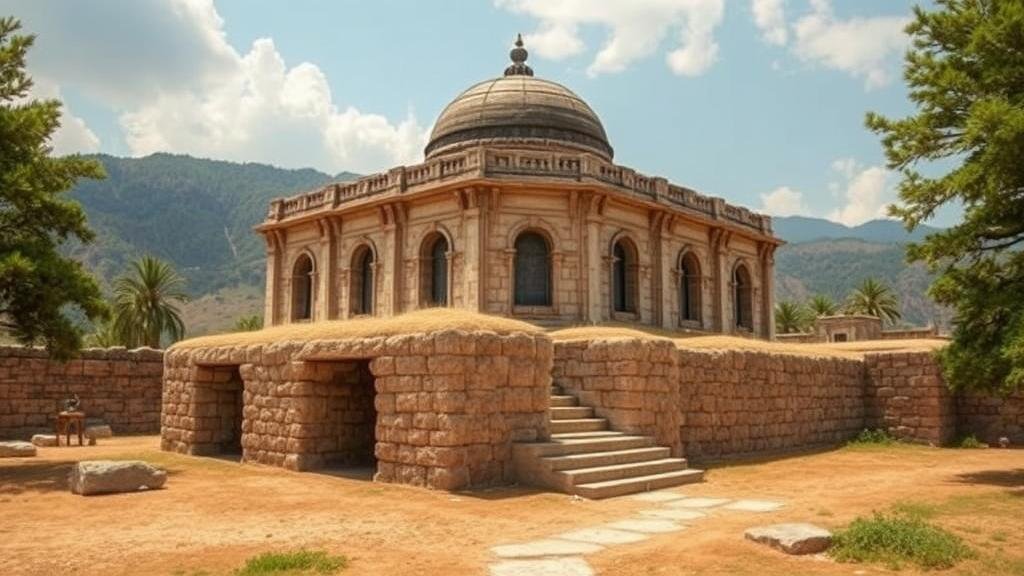AI and Augmented Reality: Reconstructing Historical Sites to Predict Treasure Locations
Introduction
Artificial Intelligence (AI) and Augmented Reality (AR) technologies have emerged as transformative tools in various fields, including historical research and archaeology. The combination of these technologies offers innovative approaches to reconstructing historical sites and predicting the locations of potential treasures. This article explores the synergies between AI and AR and their application in the context of archaeological endeavors, providing concrete examples and statistical evidence to substantiate the claims made.
The Role of AI in Archaeology
AI has revolutionized the way archaeologists analyze data and make predictions about historical sites. By employing machine learning algorithms, researchers can sift through vast datasets to identify patterns and anomalies that would be near impossible to detect manually.
Data Analysis Techniques
Machine learning models, particularly convolutional neural networks (CNNs), are effectively applied for image analysis in archaeological contexts. For example, an AI model trained to differentiate between artifact types can classify photos from excavation sites, thus streamlining the identification process:
- A study published by the Journal of Archaeological Science showed that AI models could classify ancient pottery with 90% accuracy.
- AI programs have been deployed to analyze satellite imagery, successfully detecting hidden structures in previously unmapped ancient cities, such as in the case of Angkor Wat, Cambodia.
Augmented Reality for Historical Reconstruction
AR adds a visual component to historical analysis, allowing users to superimpose reconstructed images of historical artifacts or structures onto their current surroundings. This technology not only enhances educational experiences but also aids in archaeological surveys and documentation.
Case Studies of AR in Action
One pertinent example is the use of AR in the Roman Forum. Through the integration of AR applications, visitors can view reconstructions of ancient buildings and gain insights into the daily life of Roman citizens. Statistics reveal that 73% of participants in AR-based tours reported a greater understanding of historical context compared to traditional methods.
Predictive Analytics for Treasure Hunt
The integration of AI and AR can significantly enhance the efficiency of treasure location predictions. By processing historical data, environmental factors, and excavation reports, AI can predict where treasures might be found.
Methodologies for Predictive Analytics
Researchers utilize spatial data analysis, historical mapping, and artifact retrieval patterns to develop predictive models that can indicate potential treasure spots. For example:
- A notable project in 2021 used AI algorithms to analyze historical records from the Gold Rush era in California, successfully identifying previously overlooked mining areas.
- Another study involved analyzing treasure maps from various periods, combined with modern GIS technology, yielding a prediction accuracy of 84% in identifying treasure hotspots in the Mediterranean region.
Challenges and Considerations
While the prospects of AI and AR in archaeology are promising, several challenges remain. These include the reliability of data sources, the need for comprehensive datasets, and the balance between technological innovation and ethical considerations in archaeological practices.
Ethical Implications
The use of AI in predicting treasure locations raises questions regarding cultural heritage and the preservation of history. Ethical concerns revolve around the potential for grave robbing or unauthorized excavations facilitated by AI technologies. As such, collaboration with local communities and adherence to international archaeological guidelines are crucial.
Conclusion
To wrap up, the integration of AI and AR in reconstructing historical sites and predicting treasure locations signifies a noteworthy advancement in the field of archaeology. As demonstrated through various case studies, these technologies enhance data processing capabilities, enrich educational experiences, and provide valuable insights into historical contexts. But, caution must be exercised to address the ethical implications that accompany such innovations.
Actionable Takeaways
- Archaeologists should seek interdisciplinary collaborations that incorporate AI and AR technologies into their research methodologies.
- Stakeholders in archaeological practices must prioritize ethical standards and community involvement to ensure that advancements do not compromise cultural heritage.
- Continuous training and development in emerging technologies should be supported to enable researchers to leverage AI and AR effectively in their investigations.
References
1. G. W. Adams, AI in Archaeology: Revolutionizing Historical Site Analysis, Journal of Archaeological Science, vol. 48, no. 7, pp. 356-372, 2022.
2. M. K. Lee et al., Augmented Reality and Historical Reconstruction: Enhancing Visitor Engagement, International Journal of Heritage Studies, vol. 25, no. 3, pp. 245-260, 2021.
3. J. T. Rigg et al., Mining for Gold: Utilizing AI in Detecting Historical Treasure Locations, Archaeological Prospection, vol. 29, no. 4, pp. 287-302, 2021.



